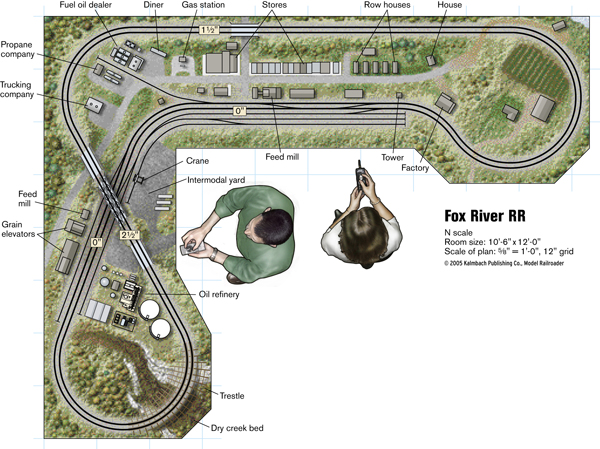
Track plan at a glanceName: Fox River RRScale: N (1:160)Size: 8 x 10.5 feetTheme: Midwest railroadEra: 1980sStyle: L shapedMainline run: 50 feetMinimum radius: 15″Minimum turnout: no. 4Maximum grade: 2 percentOriginally appeared in the June 2005 issue of Model Railroader. Also appeared in 102 Realistic Track Plans.Click on the link to download a PDF of this […]
Read More…
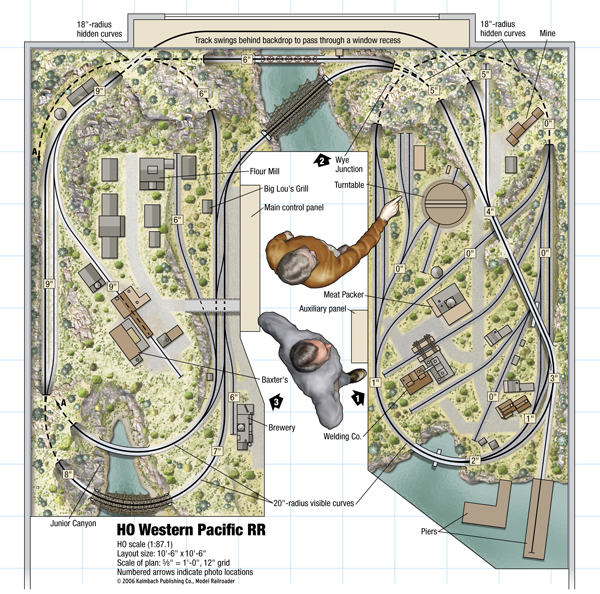
Track plan at a glanceName: Western Pacific RRScale: HO (1:87.1)Size: 9′-0″ x 10′-6″Prototype: freelanced using Western Pacific lettering and heraldsEra: 1935Style: walk-inMainline run: 63 feetMinimum radius: 18″Minimum turnout: no. 4Maximum grade: 3.5 percentOriginally appeared in the November 2006 issue of Model Railroader. Also appeared in 102 Realistic Track Plans.Click on the link to download a […]
Read More…
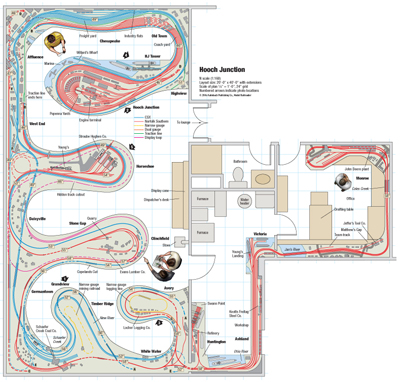
Track plan at a glanceName: Hooch Junction RRScale: N (1:160)Size: main room 20 x 40 feet, with 12 x 14-foot and 8 x 14-foot extensionsPrototype: Norfolk Southern, CSX, and predecessor linesEra: modernStyle: walk-inMainline run: 1,000 feetMinimum radius: 15″ main, 12″ yardsMinimum turnout: no. 4Maximum grade: 2.5 percentOriginally appeared in the September 2006 issue of Model […]
Read More…
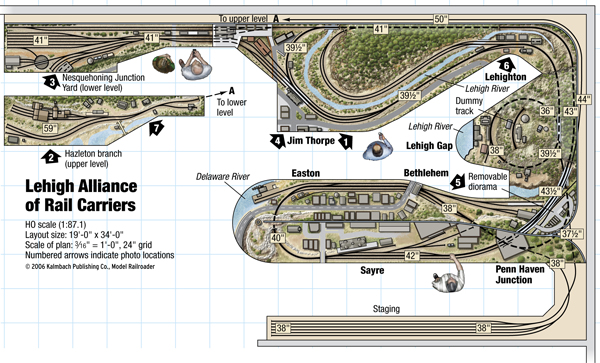
Track plan at a glanceName: Lehigh Alliance of Rail CarriersScale: HO (1:87.1)Size: 19′-0″ x 34′-0″Theme: fictional merger between the Central of New Jersey, Delaware & Hudson, Erie Lackawanna, Lehigh Valley, and Reading railroadsEra: late 1960s, early 1970sStyle: walkaroundMainline run: 110 feetMinimum radii: 24″ (main), 18″ (industrial areas)Minimum turnouts: no. 6 (main), no. 4 (industrial)Maximum grade: […]
Read More…
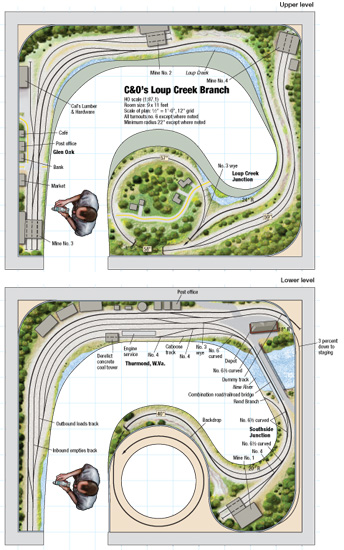
Track plan at a glanceName: Loup Creek BranchScale: HO (1:87.1)Size: 9 x 11 feetPrototype: Chesapeake & OhioEra: 1970sStyle: multilevel walk-inMainline run: 95 feetMinimum radii: 22″ main line, 18″ staging, sidings, and spursMinimum turnout: no. 6 main line, no. 4 spursMaximum grade: 3 percentOriginally appeared in the May 2007 issue of Model Railroader. Also appeared in […]
Read More…
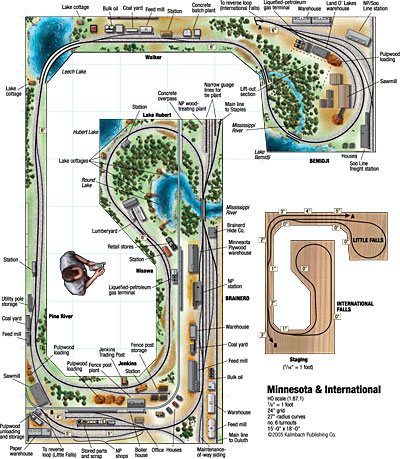
Track plan at a glanceName: Minnesota & InternationalScale: HO (1:87.1)Size: 15′-0″ x 18′-0″Minimum radius: 27″Minimum turnout: no. 6Maximum grade: 2.5 percentOriginally appeared in the January 2006 issue of Model Railroader. Also appeared in 102 Realistic Track Plans.Click on the link to download a PDF of this track plan […]
Read More…
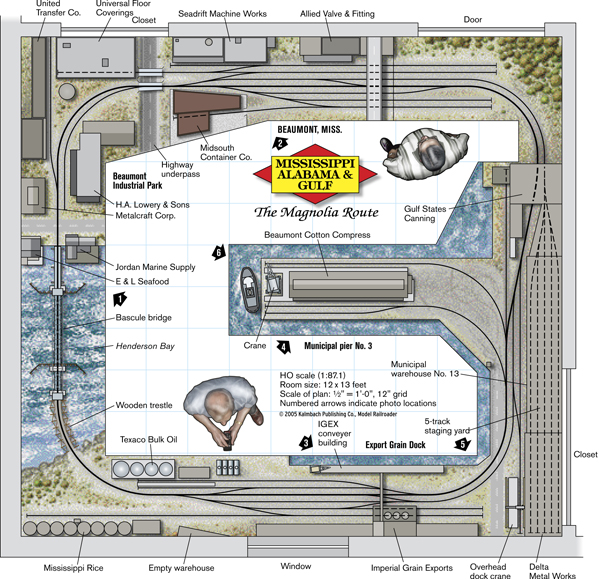
Track plan at a glanceName: Mississippi, Alabama, & GulfScale: HO (1:87.1)Size: 24 x 27 feetPrototype: freelancedEra: 1950sStyle: around-the-walls and peninsulaMainline run: 47 feetMinimum radius: 22″ main line, 18″ on spur tracksMinimum turnout: no. 4Maximum grade: noneOriginally appeared in the April 2005 issue of Model Railroader.Click on the link to download a PDF of this track […]
Read More…
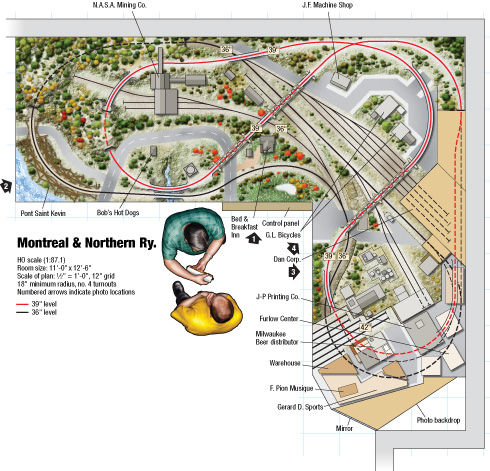
Track plan at a glanceName: Montreal & Northern Ry.Scale: HO (1:87.1)Size: 10′-4″ x 12′-6″ (L-shaped)Prototype: freelancedEra: modernStyle: portable, panoramicMainline run: 40 feetMinimum radius: 18″Minimum turnout: no. 4Maximum grade: 11 percentOriginally appeared in the January 2007 issue of Model Railroader.Also appeared in 102 Realistic Track Plans.Click on the link to download a PDF of this track […]
Read More…
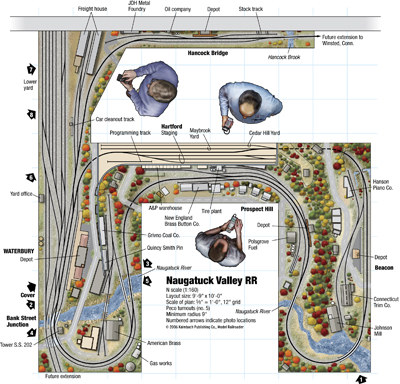
Track plan at a glance Name: Naugatuck Valley RRScale: N (1:160)Size: 9’9″ x 10’0″Prototype: New York, New Haven & Hartford RRPeriod: fall 1959Style: walkaroundMainline run: Waterbury/south 41 feet, Waterbury/north 11 feetMinimum turnout: no. 5Minimum radius: 11″Originally appeared in the April 2006 issue of Model Railroader.Click on the link to download a PDF of this track […]
Read More…
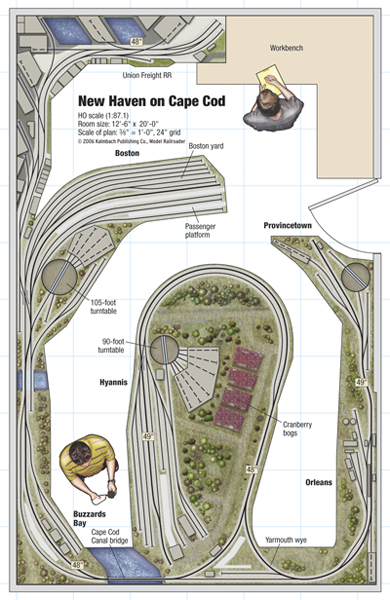
Track plan at a glance Name: New Haven on Cape CodLayout designer: John PrykeScale: HO (1:87.1)Size: 12 x 20 feetPrototype: New York, New Haven & Hartford RREra: 1948Style: walkaroundMainline run: 56 feetMinimum radius: 32″ (passenger), 26″ (freight-only track)Minimum turnout: no. 4Maximum grade: 1.5 percentOriginally appeared in the October 2006 issue of Model Railroader. Also appeared […]
Read More…
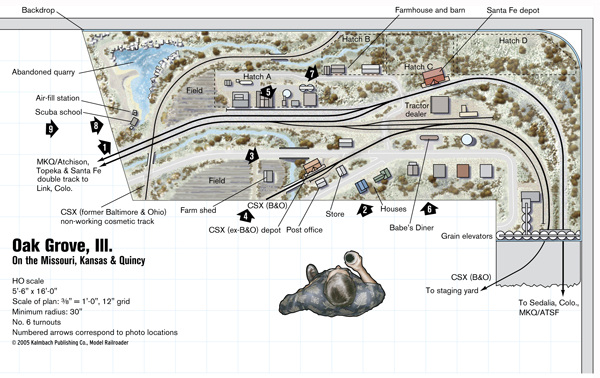
Track plan at a glanceName: Oak Grove, Ill.Scale: HOSize: 5′-6″ x 16′-0″Minimum radius: 30″Minimum turnout: no. 6Originally appeared in the June 2005 issue of Model Railroader. Also appeared in 102 Realistic Track Plans.Click on the link to download a PDF of this track plan […]
Read More…
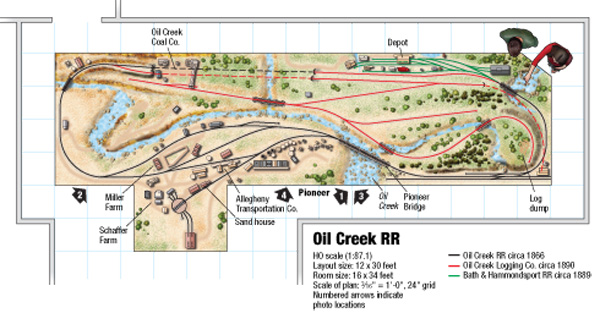
Track plan at a glanceName: Oil Creek RRScale: HO (1:87.1)Size: 12 x 30 feetEra: 1866-1899Style: free-standingMainline run: 75 feetMinimum radius: 24″Minimum turnout: no. 4Maximum grade: 3 percentOriginally appeared in the January 2007 issue of Model Railroader. Click on the link to download a PDF of this track plan […]
Read More…












